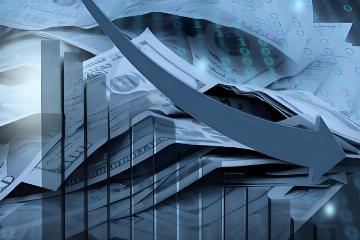As the United States navigates the confluence of economic policy changes, the Federal Reserve finds itself in a complex landscape of inflation and interest rate projectionsRecent adjustments in the federal funds rate and ongoing deliberations about tariffs illustrate the uncertainty that surrounds financial forecasting in today's economic environment.
Last week, the Federal Reserve took the significant step of reducing the benchmark federal funds rate to 4.375%, marking the third consecutive rate cutThis decision comes on the heels of an upward revision in the Fed's inflation expectations, driven in part by a new administration's "highly conditional estimates" regarding the economic implications of its policiesThe Fed's chair, Jerome Powell, indicated that current inflation data—particularly those showing an uptick—have affected these expectations and the pacing of potential rate cuts for the upcoming year.
It is important to note that the Fed's forward-looking stance on interest rates is being shaped by a variety of factors, including potential large-scale cuts in government spending, sweeping changes in immigration policy, and the introduction of tariffs on imports
Advertisements
With these realities in mind, the Fed has halved its expectations for rate cuts in 2025, with markets now anticipating only two reductions within the next twelve months.
Powell addressed reporters, explaining that the potential slowdown in rate cuts next year truly reflects both the higher inflation data of this year and the anticipated inflationary pressures to comeHe emphasized that the Fed will remain responsive to data, indicating that the broader sense of the Federal Open Market Committee (FOMC) will guide decisions on monetary policy moving forward.
Nonetheless, the uncertainty associated with proposed tariffs poses a challengeSpecifically, Powell highlighted that the force of these tariffs may not manifest as quickly as some policymakers hope, and that the reactions from trading partners remain uncertainCurrent legislation permits targeted tariffs based on national security risks
Advertisements
Still, for comprehensive tariffs to be implemented, congressional approval is essential—a hurdle that is far from guaranteed.
There are also significant legal and logistical challenges to consider, especially regarding tariffs on goods from Canada and MexicoSuch actions risk violating trade agreements negotiated in 2020, leading to a protracted series of legal battles that could delay any financial relief or stability anticipated from these measures.
In terms of governmental expenditure, the newly-elected president has proposed a range of tax cuts lacking clear financial backingJust last week, efforts to pressure Congress into extending or lifting the debt ceiling were unsuccessful, raising questions about the feasibility of forthcoming fiscal policies.
Patrick Welton, founder and Chief Investment Officer of Welton Investment Partners, posits that investors should prepare for a swift implementation of tariffs in the first quarter of next year, along with modest reductions in government spending and a delay in broad tax policy revisions
Advertisements
He further questions whether the tariffs in discussion are a temporary measure or a strategy that will carry through to negotiations.
Taxation and spending plans are entwined with similar uncertaintiesMaligned debates in Congress arise repeatedly, highlighted by a recent episode where 34 House Republicans rejected a streamlined appropriations bill even after the two-year debt ceiling pause was liftedThis event points to the challenges ahead in garnering sufficient support for tax reduction proposals without accompanying spending cuts.
Samuel Tombs from Pantheon Macroeconomics elaborated on these complexities, noting that funding tax cuts through reduced federal employment and tightened welfare payments would likely diminish consumer demand significantlyThis combination of factors could spell trouble not just for economic growth but also for the Fed's capacity to take decisive rate action in the latter half of next year.
Market sentiment around future interest rate cuts remains muted, with the Chicago Mercantile Exchange's FedWatch Tool implying that the chances of a May rate cut are akin to a coin flip, while June’s likelihood shows marginally higher expectations
- Han's M&A Faces Hurdles in Hong Kong
- 2024: A Milestone Year for AI
- Polysilicon Production Cuts to Impact PV Market
- Western Chip Firms Double Down on China
- Hong Kong Dividend Plays Offer Value
Concurrently, yields on U.STreasury bonds are on the rise, with two-year Treasury yields sitting at 4.321%, virtually in parity with the current federal funds rate, despite last week's inflation data from November falling short of expectations.
This landscape raises questions about the Fed's leaning toward dovish sentiment regarding interest ratesGregory Daco, Chief Economist at EY, shed light on this by contrasting Powell's prior statementsDaco affirmed that the Fed's approach is grounded in caution, abstaining from conjectures about specific policy developmentsThe prognostications of inflation in 2025 appear more stringent, even as GDP and unemployment rate forecasts remain stagnantThis indicates the awareness among some policymakers of potential shifts in regulation, immigration laws, trade policies, and taxation.
Despite this backdrop, Daco suggested that a more tempered scenario may emerge when the Fed reevaluates its rate forecasts in the spring
